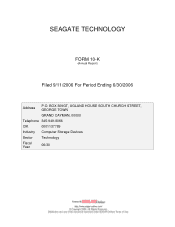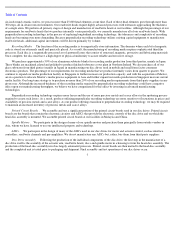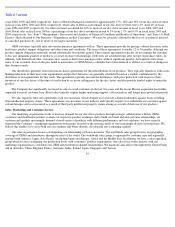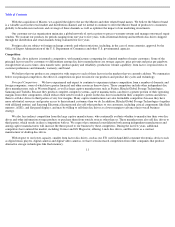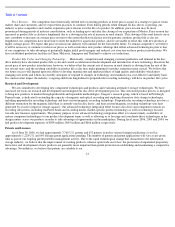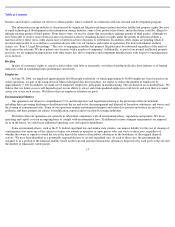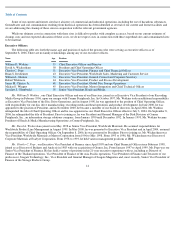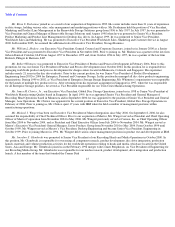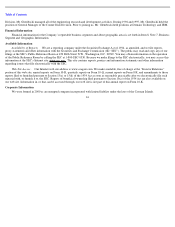Seagate 2005 Annual Report Download - page 8
Download and view the complete annual report
Please find page 8 of the 2005 Seagate annual report below. You can navigate through the pages in the report by either clicking on the pages listed below, or by using the keyword search tool below to find specific information within the annual report.
Table of Contents
•
interface transfer rate, commonly expressed in megabytes per second, which is the rate at which data moves between the disc drive
and the computer controller;
•
average seek time, commonly expressed in milliseconds, which is the time needed to position the heads over a selected track on the
disc surface,
•
data transfer rate, commonly expressed in megabytes per second, which is the rate at which data is transferred to and from the disc;
and
Areal density is a measure of storage capacity per square inch on the recording surface of a disc. Current areal densities are sufficient to
meet the requirements of most applications today. Although the rate of increase in areal density is slowing, we expect the long-
term demand for
increased drive capacities to continue to increase as audio and visual data require many multiples of the storage capacity of simple text. We
have pursued, and expect to continue to pursue, a range of technologies to increase areal densities across the entire range of our products to
increase disc drive capacities and to enable the production of higher capacity, smaller form factor disc drives. For example, the disc drive
industry is undergoing a shift from longitudinal to perpendicular recording technology, in which data bits are oriented vertically on the disc
platter (perpendicular to the disc surface), rather than flat to the surface in order to increase areal density and capacity. As a result of the
transition to perpendicular recording technology, there is a need to increase the thickness of the recording materials, and increase the
complexity of the read/write head technology. Furthermore, perpendicular recording technology requires a complex interplay between the
read/write heads, the recording media, the ASICs and the disc drive software.
Manufacturing
•
product quality and reliability, commonly expressed in annualized return rates (ARR).
We pursue an integrated business strategy based on the ownership of critical component technologies. This strategy allows us to maintain
control over our product roadmap and component cost, quality and availability. Our manufacturing efficiency and flexibility is a critical
element of our integrated business strategy. We continuously seek to improve our manufacturing efficiency by:
•
consolidating the number of facilities we operate and reducing the number of personnel we employ;
•
expanding manufacturing automation to enhance our efficiency and flexibility;
•
applying Six Sigma to improve product quality and reliability and reduce costs;
•
integrating our supply chain with suppliers and customers to enhance our demand visibility and reduce our working capital
requirements; and
Manufacturing our disc drives is a complex process that begins with the production of individual components and ends with a fully assembled
unit. We design, assemble and/or manufacture a number of the most important components found in our disc drives, including read/write
heads, recording media, printed circuit boards and spindle motors.
We believe that because of our vertical design and manufacturing strategy, we are well suited to meet the challenges posed by the close
interdependence of components for disc drives, which is especially critical in the design and production of products incorporating
perpendicular recording technology.
Read/Write Heads . The function of the read/write head is to scan across the disc as it spins, magnetically recording or reading
information. The tolerances of recording heads are extremely demanding and require state-of-the-art equipment and processes. Our read/write
heads are manufactured with thin-film and photolithographic processes similar to those used to produce semiconductor integrated circuits.
Beginning with
6
•
coordinating between our manufacturing group and our research and development organization to rapidly achieve volume
manufacturing and enhance our product quality and reliability.

